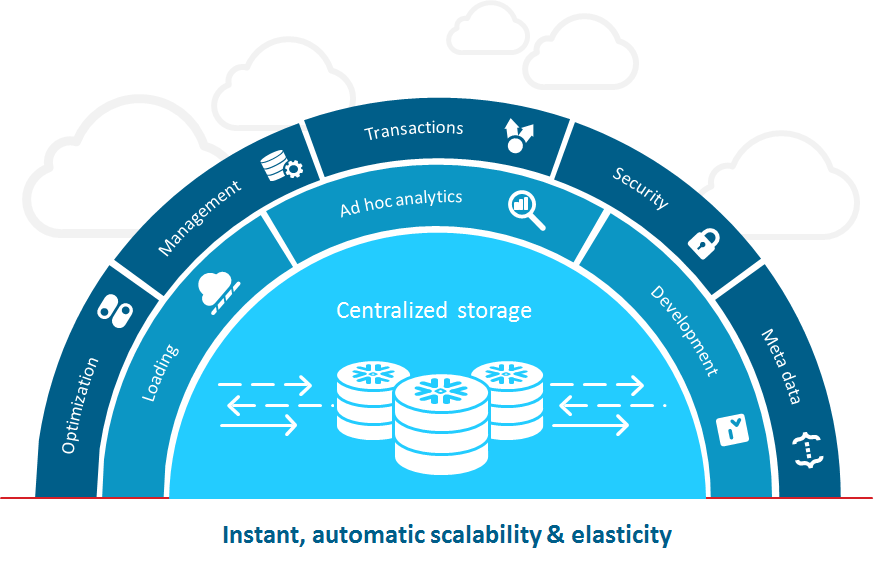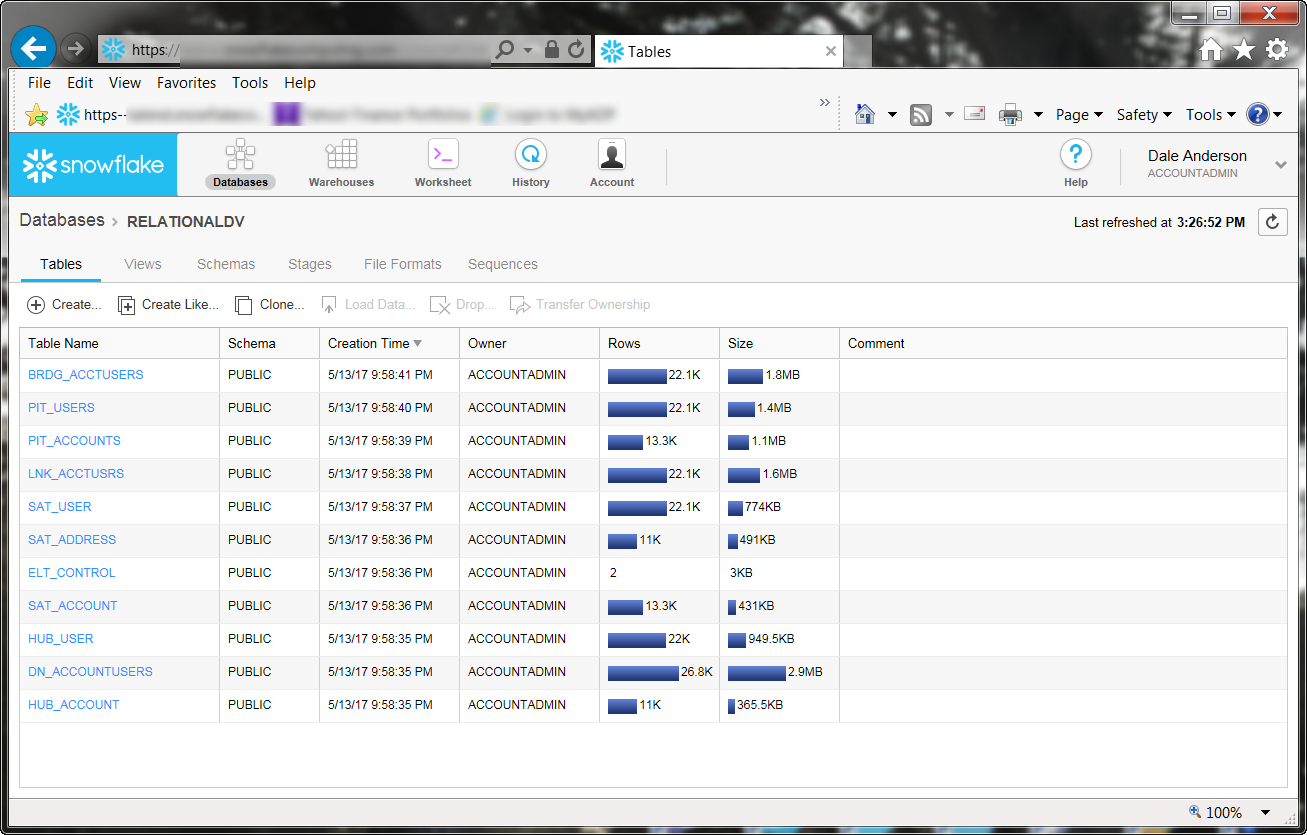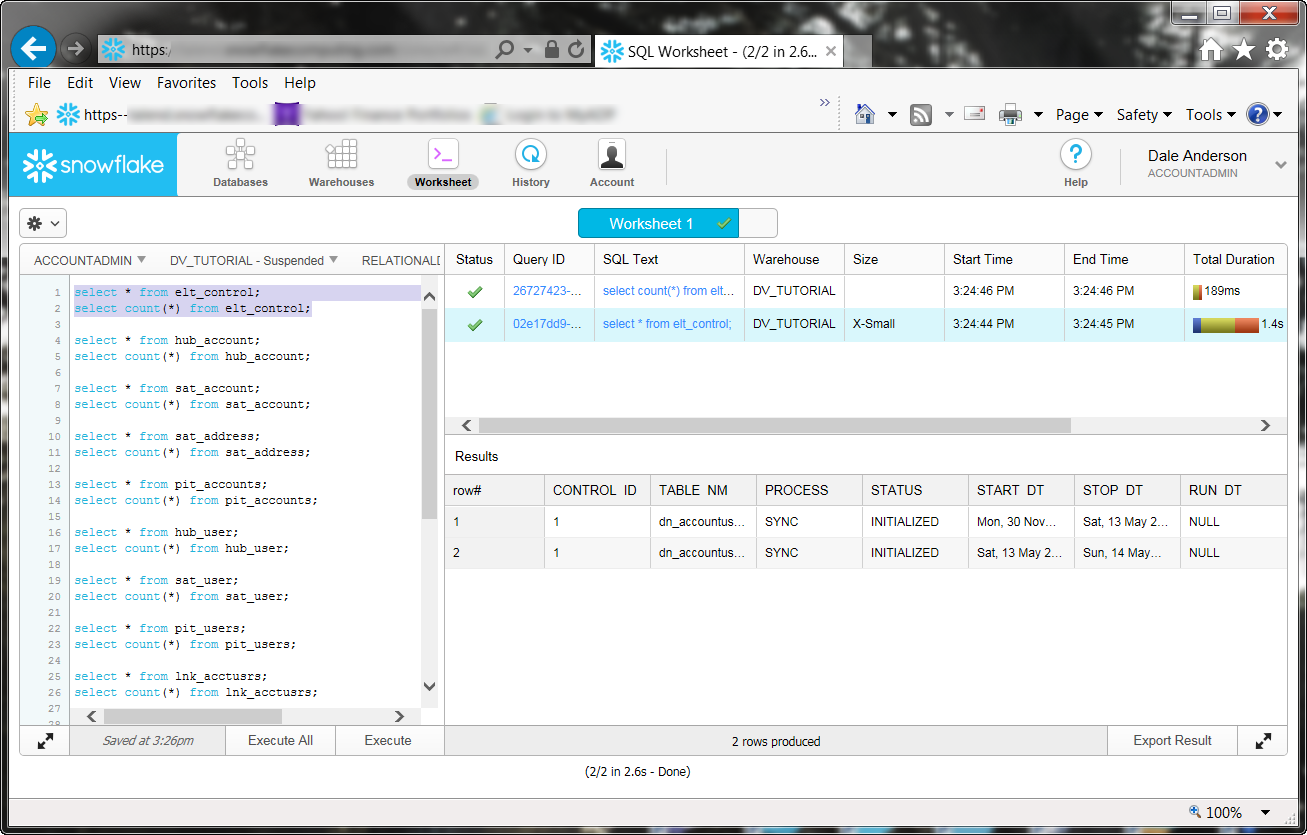What is Snowflake?
Snowflake is a patented data technology, designed from the ground up for the
cloud, that runs on Amazon Web Services (AWS), Microsoft Azure or Google Cloud Platform
(GCP).
Implemented as a fully-relational SQL database, Snowflake supports both structured and
semi-structured data, standard SQL queries, and ACID compliance
without complex administration or operation requirements. The Snowflake
Architecture separates data storage from a multi-clustered compute facility
enabling a unique, scalable, and managed resource for a data warehouse in the cloud.


The key to understanding how the Snowflake database works is that the storage mechanism (built upon AWS S3, Azure Blob Storage or Google Cloud Storage) is separated from the compute mechanism. They work together when a connection is made. This allows Snowflake to deliver a highly-scalable database in the cloud where you add more storage as needed, and create an elastic cluster for computational work. Simply put, you pay for what you use when you use it.
Snowflake provides a web-based Workbench for user access to the
administration and configuration of an environment. Creating a
Warehouse is easy, sized appropriate to needs. Configuration
settings support when an idle instance should shut down, and the number of nodes to spin
up as needed.


Switching to the Database tab, creating a database and granting
user permissions to it is also quite easy. Here you can see the tables in a selected
database and its current footprint.


The Worksheet tab provides users a graphical interface to execute
SQL queries directly against a database.


For additional details on Snowflake and its inner workings, visit the www.snowflake.net website.
Did this page help you?
If you find any issues with this page or its content – a typo, a missing step, or a technical error – let us know how we can improve!
